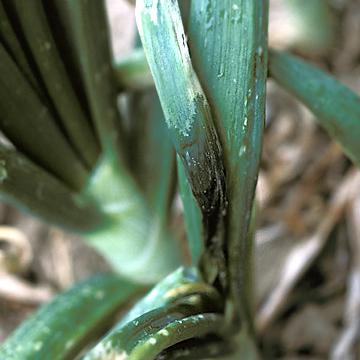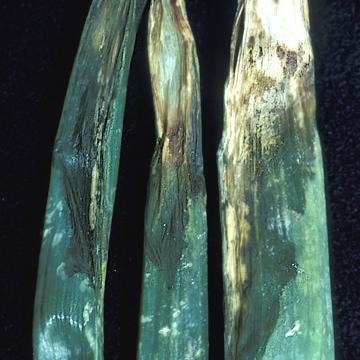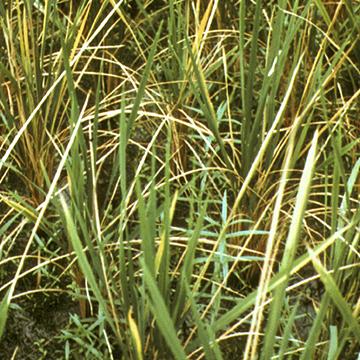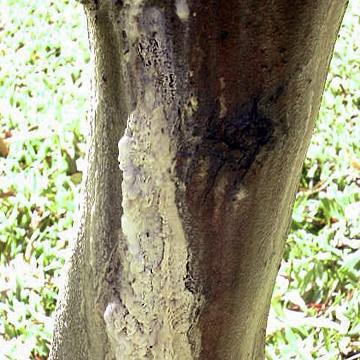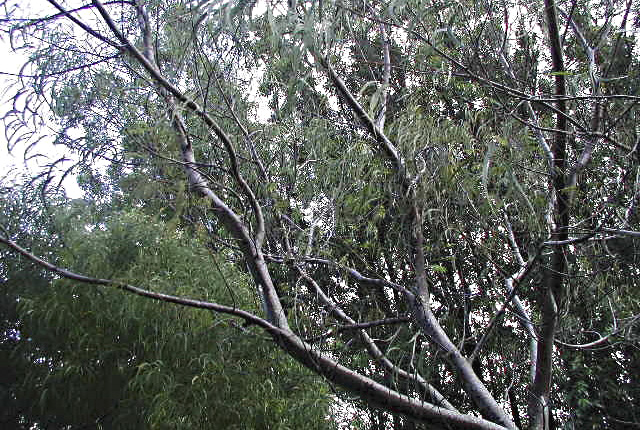DISEASE: Bacterial flower stalk and leaf necrosis
HOST: Onion
Dark, rotted areas of stalk and leaves caused by systemic invasion of the pathogen.
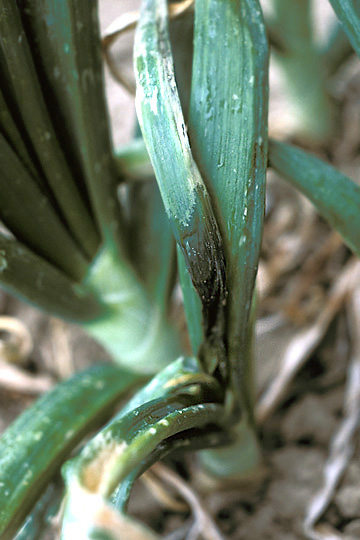
Bacterial flower stalk and leaf necrosis | Onion
DISEASE: Bacterial flower stalk and leaf necrosis
HOST: Onion (Allium cepa)
PATHOGEN: Pseudomonas marginalis pv. marginalis
SOURCE: S. Mohan
DISEASE: Bacterial flower stalk and leaf necrosis
HOST: Onion
Gray-brown rot of onion after inoculation. Disease starts as small, water-soaked lesions that later develop into slimy, gray-brown rot. The disease progresses downward from the stalk and may rot the entire bulb.
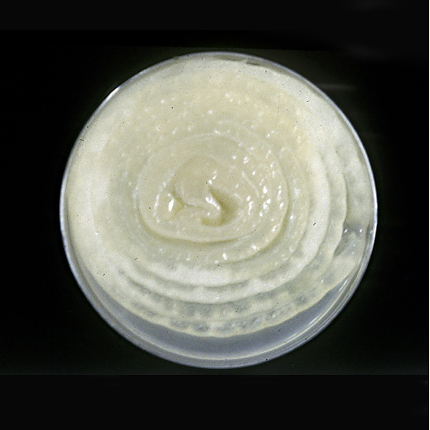
Bacterial flower stalk and leaf necrosis | Onion
DISEASE: Bacterial flower stalk and leaf necrosis
HOST: Onion (Allium cepa)
PATHOGEN: Pseudomonas marginalis pv. marginalis
SOURCE: R. Gitaitis
DISEASE: Bacterial flower stalk and leaf necrosis
HOST: Onion
Leaves with necrosis and rot. The common name for this disease is the same as those used for two other diseases. Also, another common name for this disease is bacterial soft rot.
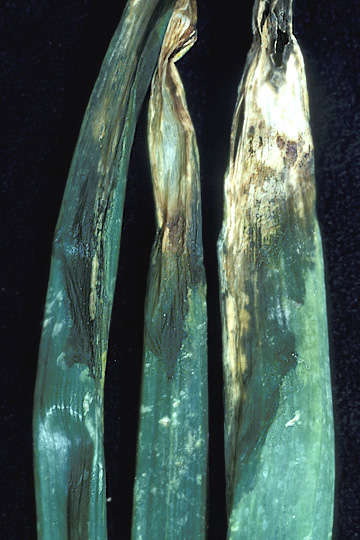
Bacterial flower stalk and leaf necrosis | Onion
DISEASE: Bacterial flower stalk and leaf necrosis
HOST: Onion (Allium cepa)
PATHOGEN: Pseudomonas marginalis pv. marginalis
SOURCE: S. Mohan
DISEASE: Bacterial foot rot
HOST: Rice
The disease causes sheaths to turn dark brown and rot; dead leaves droop. Nodes, culms, and crowns also decay, and infected tillers are easily detached from the crown. Culms and internodes turn black.

Bacterial foot rot | Rice
DISEASE: Bacterial foot rot
HOST: Rice (Oryza sativa)
PATHOGEN: Dickeya zeae
PATHOGEN SYNONYM: Erwinia chrysanthemi pv. zeae
SOURCE: M. Goto
DISEASE: Bacterial foot rot
HOST: Rice
Decayed culms (right) and healthy culms (left). Leaf sheaths of infected plants exhibit dark brown decay and attached leaves turn yellow and wilt.

Bacterial foot rot | Rice
DISEASE: Bacterial foot rot
HOST: Rice (Oryza sativa)
PATHOGEN: Dickeya zeae
PATHOGEN SYNONYM: Erwinia chrysanthemi pv. zeae
SOURCE: M. Goto
DISEASE: Foamy canker
HOST: Almond
White, macerated tissues near cambium region is characteristic of disease. Foam is usually associated with cankers. The disease is suspected to be bacterial but the causal agent has not been identified.

Foamy canker | Almond
DISEASE: Foamy canker
HOST: Almond (Prunus dulcis)
PATHOGEN: Causal agent unknown
SOURCE: B. Teviotdale
DISEASE: Foamy canker
HOST: Almond
Amber red-colored ooze sliding down the trunk. The causal agent has not been identified.

Foamy canker | Almond
DISEASE: Foamy canker
HOST: Almond (Prunus dulcis)
PATHOGEN: Causal agent unknown
SOURCE: B. Teviotdale
DISEASE: Foamy canker
HOST: Koa
Foamy canker of koa is associated with bacteria and yeast. The causal agent has not been identified.
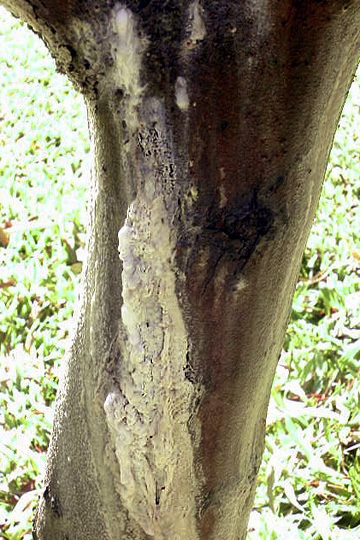
Foamy canker | Koa
DISEASE: Foamy canker
HOST: Koa (Acacia koa)
PATHOGEN: Causal agent unknown
SOURCE: H. Keyser


